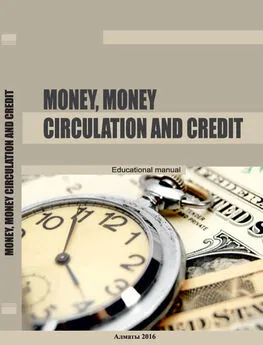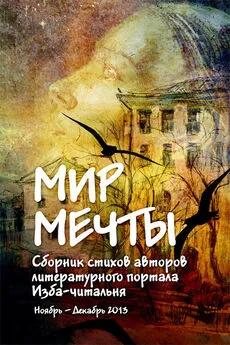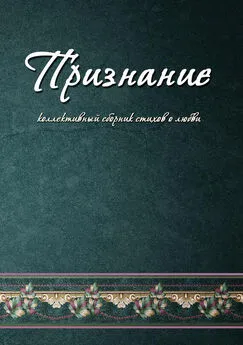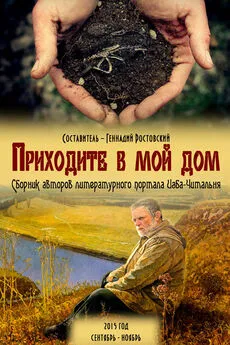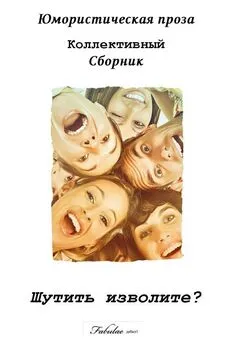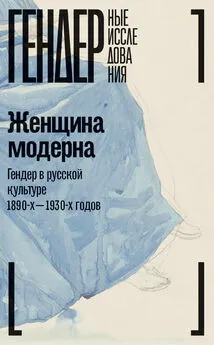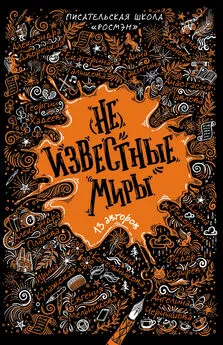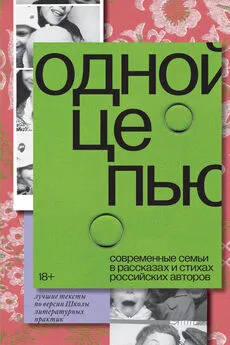Коллектив авторов - Money, money circulation and credit
- Название:Money, money circulation and credit
- Автор:
- Жанр:
- Издательство:Казахский национальный университет имени аль-Фараби Литагент
- Год:неизвестен
- ISBN:978-601-04-1569-0
- Рейтинг:
- Избранное:Добавить в избранное
-
Отзывы:
-
Ваша оценка:
Коллектив авторов - Money, money circulation and credit краткое содержание
This еducational manual is published for students and lecturers of the economic universities.
And is also could be useful for credit and fi nancial system employees.
Any distribution of this work or its part without the author’s agreement or other actions which violate a copyright norms are prohibited and punished by law.
В учебном пособии рассматриваются вопросы теории и практики денег, кредита и банковской системы страны, в частности, сущность денег, денежное обращение, кредит, денежная, кредитная и банковская система государства, становление и развитие банковской системы республики, ее функции и операции, развитие рынка ценных бумаг, фондовая биржа и международные валютно-кредитные отношения.
Учебное пособие предназначено для студентов и преподавателей экономических вузов. Также оно может быть полезным работникам кредитно-финансовой системы. Любое распространение этой работы или ее части без согласия автора или других действий, которые нарушают авторское право, запрещены и караются по закону.
Money, money circulation and credit - читать онлайн бесплатно ознакомительный отрывок
Интервал:
Закладка:
Among the west countries the first who began to issue paper money were the North American States. In 1690 such monetary units were issued in Massachusetts State.
In Europe the first who decided to adopt the American practices was France: in 1716-1720 the famous economist and banker John Law (1671-1629) began to print the notes of the Royal Bank. Hereafter when the world economy followed the way paved by John Law and began to create the central banks he was granted with an exclusive right of the banknotes issue.
On the territory of Kazakhstan the paper monetary units appeared in the end of the XVIII thcentury and mainly these were the Russian monetary units.
In Russia the emission of paper money – assignats for the first time began in 1769 r. It was supposed that like in other countries who risked implementing paper money they could be freely exchanged onto silver or gold on request. But all turned otherwise. To the end of the century already the excesses of assignats forced to freeze the exchange, in the nature of things the rate of assignated ruble began to fall and the prices of goods increase.
Money separated on «bad» and «good». According to the law of Thomas Graham bad money drives out good: the money commercial value of which rises in respect to bad money and official exchange rate disappears from the circulation. It simply «put by» at homes and bank safes.
In the XX thcentury the performers of the «bad» money role were the banknotes which drove out of circulation gold. Since the First World War the tendency for the banknotes exchange on gold termination became a frequent practice. Whereupon the bank bills became almost undistinguishable from the treasury notes – the second type of paper money. The Central Bank faced the matter of the money circulation unfaltering watch. Actually paper money itself doesn’t have any useful value.
Paper money is a sign, symbol of value. How come the refusal of gold happened which became so widespread and settled subsequently? The simplest explanation is that paper money is convenient in circulation and easy for transportation. It is useful to remember the words of the famous Englishman – Adam Smith who said that paper money should be considered in the quality of the cheaper instrument of circulation.
Actually during the circulation the coins abrade and a part of precious metal disappears. Besides growths the demand of gold in industry, medicine and among supplies. And the main the goods circulation on a scale of trillions of US dollars, tenge, franks and other monetary units is impossible to cover by gold.
A transfer to a fiduciary circulation sharply widened the commodity exchange limits. Paper money – banknotes and treasury notes – are obligatory for acceptance in the quality of a payment mean on the territory of the State. Its value is determined only by the quantity of goods and services which could be purchased on it.
Thus the XX thcentury is marked by a transfer to a paper money circulation and gold and silver conversion into the commodity which could be purchased at a market price.
Paper money should be understood as a monetary unit which is issued directly or indirectly by the Treasury Department for the budget requirements and provided with a compulsory purchasing power. They include the treasure notes, different types of substitutes (government bills, government bonds, some kinds of consolidated stocks and token money).
Paper money is a monetary unit inconvertible on metal supplied with a compulsory nominal and issued by government to cover its expenses.
Modern money is a social phenomenon appointed by the governmental authorities. Its color, size and artistic features are not important for buyers and sellers. A trust to money is determined by a trust to a credibility of some or another governmental authority. The society represented by the government can easily appoint the other in form and images paper or plastic notes to perform the functions of money and the individuals will use them as money to cover their needs. That’s why nowadays money is called fiat money».
The government keeps control of the circulation emission of currency. If the money issue was unlimited or could be done by everyone thus the prices would grow sharply, money would devaluate and wouldn’t be used. The society would return to an exchange in kind.
Paper money is unstable in itself, i.e. as a rule it devaluates because it is issued for the budget deficit coverage. It is not exchanged on gold and does not have its own inmost value thus the mechanism of spare money withdrawal from circulation the «mechanism of trea- sure» does not work here. Consequently paper money issued above the norm is stuck in the channels of circulation and devaluates. The depreciation of money is an exchange of one paper monetary unit purchasing power (but not all the paper monetary stock).
There are two forms of the monetary depreciation:
Internal is a depreciation in respect to the goods on domestic market, i.e. the increase of prices;
External is a depreciation of money in respect to the foreign currency, i.e. an exchange fall (drop) of the national currency.
1.2.3. Credit money
Credit money is a collective term appeared on the basis of the private individuals’ or government’s real obligations substitution. It occurred due to the money function as a mean of payment where money acts as an obligation which should be redeemed by a real money according to a due date. Credit money includes bills, banknotes, cheque, electronic money.
Banknote is a perpetual debenture guaranteed by the Central Bank of the State. Initially the banknotes had a gold guarantee of exchange onto the gold. They are issued with a strictly defined denomination and in principle are concerned as a national money on all the State territory.
Till 1990 in the Soviet Union circulated as the treasury notes so the USSR banknotes. The first included the monetary units with small denominations of 1, 3 and 5 rubles issued by the Treasury and marked as the «treasury notes». The notes with nominations more than 10 rubles were issued by the USSR State Bank, i.e. were the banknotes.
Nowadays the monetary units in Kazakhstan are issued only by the National Bank of the Republic of Kazakhstan (under the RK law dated from March 30, 1995 № 2155 «About the National Bank of the Republic of Kazakhstan»).
According to this law the banknotes and coins issue, their circulation organization and withdrawal from the circulation on the territory of Kazakhstan are performed only by the National Bank of RK exceptionally. The banknotes and coins emission to the circulation is performed by the National Bank by means of their sale to private and legal individuals.
There are also the following statutes and regulations in respect to the banknotes issue, circulation and withdrawal: the management decree of the National Bank of the Republic of Kazakhstan from December 12, 2005 № 163 «About the adoption of regulations of sale and purchase of national currency banknotes and coins by the National Bank of RK»; the management decree of NB RK from December 26, 2003 № 477 «About the adoption of regulations of the national currency of RK banknotes and coins fitness for use determination)).
Bill of credit. The bills and cheques are the earliest forms of non-cash money invented by bankers. The archeologists discovered the evidences of the fact that the prototypes of such monetary documents were used by merchants and bankers of the Ancient Babylon, i.e. 20 centuries B.C.
However the true story of bill is linked with the capitalistic relations development. Thus the country of a transfer bill’s origin is considered Italy where in the XII-XIII thcenturies in the most prevailing conditions of the economical, political and geographical factors the capitalism and trade ties with other countries developed. It is a necessity of trade turnover and market trade development that brought into the world the bill of credit.
The bill of credit is a debitor’s written absolute commitment to pay a definite sum when and where due. An absoluteness of the bill differences it fundamentally from an ordinary receipt where usually the reasons and terms of the future payment are denoted. But the bill doesn’t denote the factors according to which a person who draws out a bill (a bill drawer) is obliged to pay the denoted sum to the bill holder.
Moreover unlike the bill of debt the law allows the bill holder not to wait for maturity in order to use it as a mean of payment to a third person, i.e. as one of a money kind.
The standards harmonization of an international drawing right happened only in 1930 in Geneva where the uniform Bills of Exchange Act (BEA) was adopted. Enshrined in the BEA main features and types of the bills and the mechanism of their circulation are currently remain basic for the modern world bills of credit market.
In the USSR the bills were used in the domestic circulation till 1917, later from 1922 till 1930. From 1930 till 1990 the bills of credit were not used in the domestic circulation of the whole USSR territory. From 1991 the usage of bills became possible in Kazakhstan because of the first national law adoption «About the paper holdings circulation and stock-markets in the Kazakh SSR» № 650-XII where a bill of credit was classified as a paper holding.
On February 27, 1992 the National Bank management adopted a temporary provision about the bills of exchange accounting system in the Republic of Kazakhstan.
One of the important points in the bills circulation development in Kazakhstan became the adoption by the President of Kazakhstan Nursultan Nazarbayev in April 28, 1997 of the law «About the bills of exchange circulation in the Republic of Kazakhstan» where was mentioned that the bills circulation in the state includes the issue and circulation of the ordinary and transfer commercial bills. The banks are not obliged to issue their own bills, they just play the role of the discount houses. Either it is forbidden by legislation to issue the accommodation, tanned and financial bills of exchange.
According to the law «About the bills of exchange circulation in the Republic of Kazakhstan» a promissory bill (one name paper) is a bill which contains an unconditional obligation of a bill drawer to pay on demand at a certain term in future a denoted in the bill sum to the bill holder. And a bill of exchange (transfer note) is a bill which contains an unconditional offer (order) of the bill drawer (trassans) to his debitor (trassatus) to be payable to a third person (remittee) or to his order at a determinable future time or upon the denoted in the bill sum presentation.
The bill of exchange in itself has no force of a lawful currency that’s why in practice it is used that the debitor (trassatus) is obliged to record in writing his agreement to make payment according to the bill at maturity, i.e. to make a draft acceptance.
According to the article of the law 24 «About the bills of exchange circulation in the Republic of Kazakhstan» the acceptance is determined by the word «accepted» or the other synonymous word. A simple payer’s signature put on an obverse has a right of an acceptance.
Practically there are also:
– commercial bill which is based on the real purchase and sale deals on credit;
– banking bill issued by bank to its client in order to accumulate the funds;
– treasure bill issued by government in order to pay budget deficit and cover budgetary gap.
To the obvious advantages of both classic and modern bills could be related in particular a facilitated mean of the rights transmission accordingly by means of a special handover note on the bill’s reverse – endorsement. Under the Article 12 of the Law «About the circulation of bills in the Republic of Kazakhstan» the endorsement should be put on the bill itself only or on a special additional page – allonge (it is attached to the bill in case of the lack of space on it for the new handover notes).
Читать дальшеИнтервал:
Закладка:
